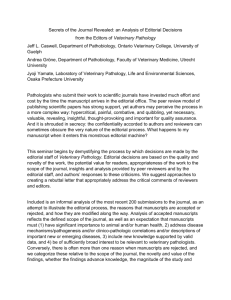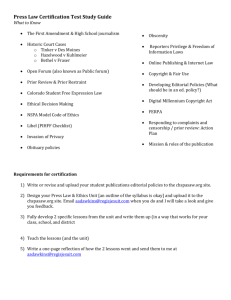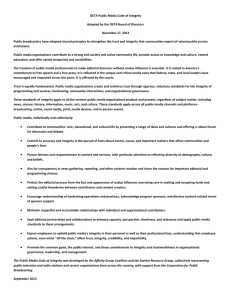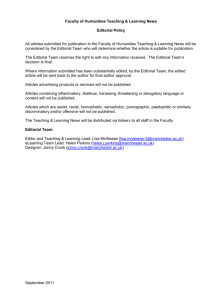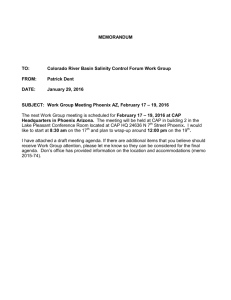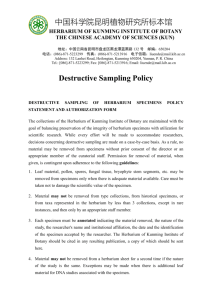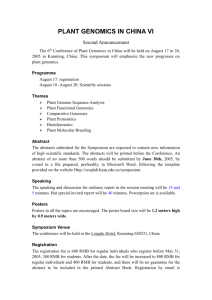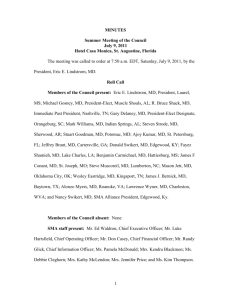Submission of manuscripts
advertisement
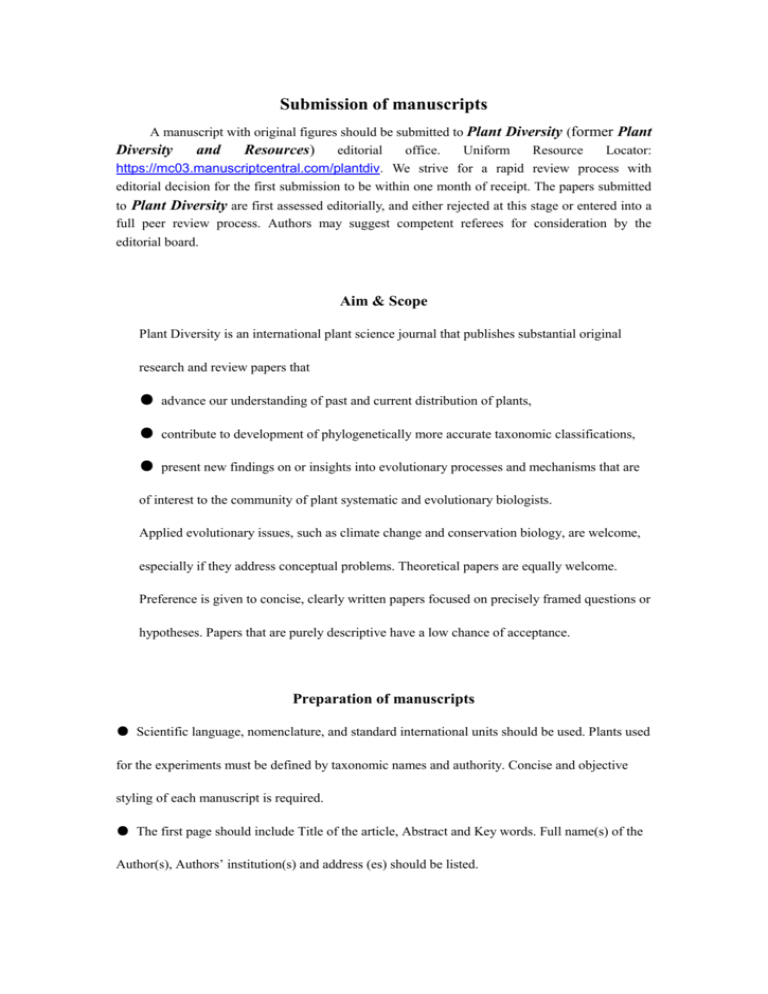
Submission of manuscripts A manuscript with original figures should be submitted to Plant Diversity (former Plant Diversity and Resources) editorial office. Uniform Resource Locator: https://mc03.manuscriptcentral.com/plantdiv. We strive for a rapid review process with editorial decision for the first submission to be within one month of receipt. The papers submitted to Plant Diversity are first assessed editorially, and either rejected at this stage or entered into a full peer review process. Authors may suggest competent referees for consideration by the editorial board. Aim & Scope Plant Diversity is an international plant science journal that publishes substantial original research and review papers that ● advance our understanding of past and current distribution of plants, ● contribute to development of phylogenetically more accurate taxonomic classifications, ● present new findings on or insights into evolutionary processes and mechanisms that are of interest to the community of plant systematic and evolutionary biologists. Applied evolutionary issues, such as climate change and conservation biology, are welcome, especially if they address conceptual problems. Theoretical papers are equally welcome. Preference is given to concise, clearly written papers focused on precisely framed questions or hypotheses. Papers that are purely descriptive have a low chance of acceptance. Preparation of manuscripts ● Scientific language, nomenclature, and standard international units should be used. Plants used for the experiments must be defined by taxonomic names and authority. Concise and objective styling of each manuscript is required. ● The first page should include Title of the article, Abstract and Key words. Full name(s) of the Author(s), Authors’ institution(s) and address (es) should be listed. ● The paper should be divided into the following sections in general: Introduction (without heading), Materials and Methods, Results, Discussion, Acknowledgements, and References. ● Group several photographs into one or more plates. The dimensions of tables, figures and plates: the maximum height is 297 mm, including the caption; width must not exceed 200 mm for full page. Literature cited In the text, cite references chronologically, but do not number them. Use “and” to link the names of two coauthors in the text (Smith and Ford, 1989) and use “et al.” where there are more than three(Smith et al., 2000). At the end of the paper, list references in alphabetical order. References both in Chinese and English should be listed in English according to the examples below: Friedman WE(author), 1994. The evolution of embryogeny in seed plants and the developmental origin and early history of endosperm(title). American Journal of Botany (journal), 81(vol):1468-1486. Hu S-Y (胡适宜), 1982. Embryology of Angiosperms(book’s name). Beijing(address): Higher Education Press(publisher). van Went J H, Willemse M T M, 1984. Fertilization. Johri B M. Embryology of Angiosperm. Berlin: Springer-Verlag. 273-317. Zheng YL(郑永利), Deng YF(邓云飞), 2003. Some new records from Guangxi. GuibaiaI(广 西植物), 23(6): 541-542 Proofs Page proofs will be sent to the corresponding author for checking and correction of typographical errors and should be returned before the specified date. Instructions for manuscripts submitted Please send only the corresponding final updated version and save the text documents as WORD files (.doc files). Although such formats as .JPEG, .PNG, .BMP are allowed for computer-generated photographic illustration files, the .TIFF format is preferred. Contacts Us Editorial Office of Plant Diversity Kunming Institute of Botany, Chinese Academy of Sciences, Lanhei Road 132#,Kunming, Yunnan, China (650201) Website: http://journal.kib.ac.cn Tel:+86-871-65223032 Fax:+86-871-65223032 E-mail:bianji@mail.kib.ac.cn, linnana@mail.kib.ac.cn



